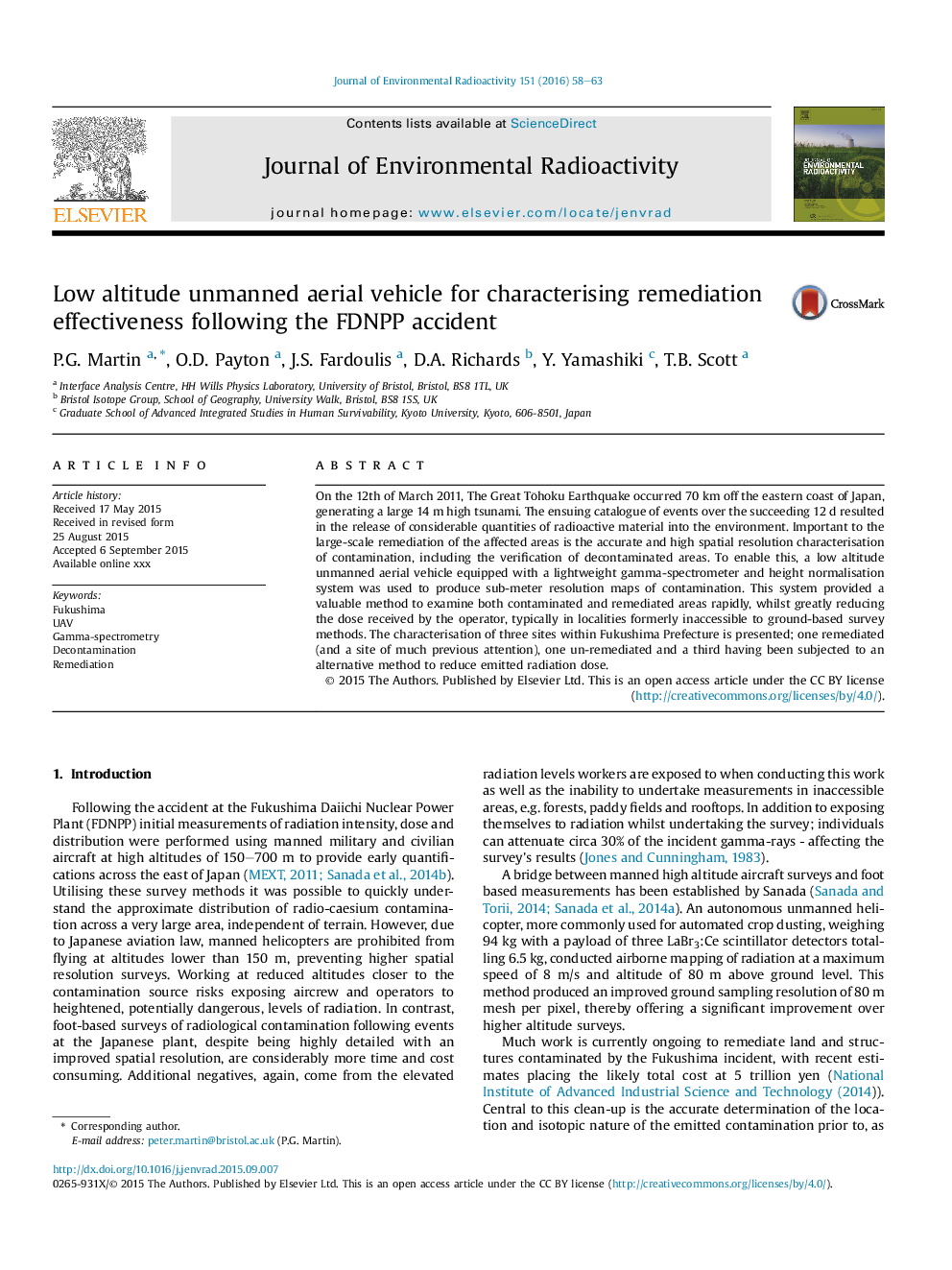| Article ID | Journal | Published Year | Pages | File Type |
|---|---|---|---|---|
| 10686571 | Journal of Environmental Radioactivity | 2016 | 6 Pages |
Abstract
On the 12th of March 2011, The Great TÅhoku Earthquake occurred 70Â km off the eastern coast of Japan, generating a large 14Â m high tsunami. The ensuing catalogue of events over the succeeding 12Â d resulted in the release of considerable quantities of radioactive material into the environment. Important to the large-scale remediation of the affected areas is the accurate and high spatial resolution characterisation of contamination, including the verification of decontaminated areas. To enable this, a low altitude unmanned aerial vehicle equipped with a lightweight gamma-spectrometer and height normalisation system was used to produce sub-meter resolution maps of contamination. This system provided a valuable method to examine both contaminated and remediated areas rapidly, whilst greatly reducing the dose received by the operator, typically in localities formerly inaccessible to ground-based survey methods. The characterisation of three sites within Fukushima Prefecture is presented; one remediated (and a site of much previous attention), one un-remediated and a third having been subjected to an alternative method to reduce emitted radiation dose.
Related Topics
Physical Sciences and Engineering
Energy
Nuclear Energy and Engineering
Authors
P.G. Martin, O.D. Payton, J.S. Fardoulis, D.A. Richards, Y. Yamashiki, T.B. Scott,
